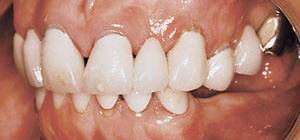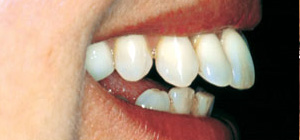Guide to Multiple Implants
The information in the Guide to Multiple Implants provides a comprehensive explanation of the consequences of missing teeth, a comparison of dental implants and bridges, and a detailed description of implant procedures. We encourage you to review all of the pages to help you make an informed decision about your treatment options.
Consequences of Missing Multiple Teeth
It is estimated that 70% of the population in the United States is missing at least one tooth and that people over the age of 60 have lost an average of 9 teeth. There are many reasons that people lose teeth over time including, decay, fracture, failed root canal therapy, and periodontal (gum) disease. The more teeth that are missing, the more challenging it becomes to replace them.
The number one cause of multiple tooth loss in adults is periodontal disease, an infection that eventually destroys the bone supporting the teeth if left untreated, causing them to become mobile and eventually nonfunctional. If periodontal disease progresses too far, it can be impossible to save the affected teeth and they must be removed.
There are several significant problems associated with multiple missing teeth, including bone resorption (deterioration), teeth drifting into spaces created by tooth loss or removal, teeth in the opposing jaw moving up or down into the spaces and anterior teeth flaring out when posterior teeth are missing, as seen in the photos below. Excessive wear on the remaining teeth and the possibility of painful dysfunction of the jaw joints are also consequences of multiple missing teeth.

Bone resorption and gum tissue recession occur behind the false teeth on this tooth-supported bridge

The bite collapses with missing lower posterior teeth and upper teeth move down into the space.

Anterior teeth flare out as they are pushed forward when multiple posterior teeth are missing